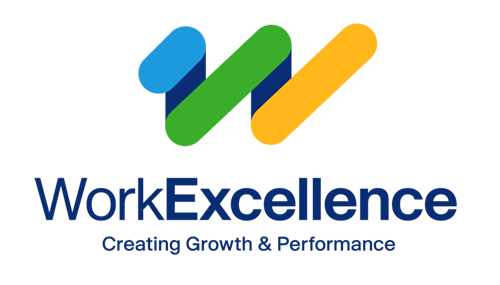
Aligning Current and Desired States with The Work Continuum
Every organization has a current state and a desired state. The key to getting to where you want to go is to first know where you are. Start by defining the current state – what’s happening right now? What are the current processes, metrics, and goals? Then, look to the future – where do you want to be?
In order to move from the current state to the desired state, there are four types of work that guide the journey. These are defined through the Work Excellence Work Continuum: Conceptual, Strategic, Tactical, and Execution. Each plays a critical role in moving work forward, but the key is finding the right balance and pace. If you’re struggling to make progress, it could be due to one of these reasons:
- You may lack a clear picture of your current state or clarity about your desired state.
- You may be missing a stage of work, spending too much or too little time in one phase.
Let’s break down each phase of the Work Continuum, using the example of a furniture distributor envisioning its 2025 goals.
Conceptual Work: The Ideas
Conceptual work involves generating future-state ideas, including your vision, purpose, and compelling need. This is where you dream big and explore the “what if” questions. Everyone is encouraged to participate and build on each other’s ideas, without judgment. It can be difficult to find time for this work, given all the other tasks that need to be done. However, it is essential to carve out time to work on the business, not just in it.
Example: The furniture distributor starts by brainstorming all the possibilities for 2025. Ideas include increasing sales, reimagining store design, revamping the catalog, boosting market share, and modernizing the supply chain. This phase is about casting a wide net and thinking of all potential areas for growth and innovation.
Strategic Work: The Choices
Strategic work involves categorizing the concepts generated and making deliberate choices. These choices define your long-term strategies, direction, and commitments. It’s essential to communicate these strategic decisions clearly to align the organization around them. It can be difficult to find time for this work, given all the other tasks that need to be done. However, it is essential to carve out time to work on the business, not just in it.
Example: The distributor prioritizes profitability and supply chain streamlining based on market trends and past performance. Other concepts, such as reimagining store design, are tabled for future consideration. The strategic focus becomes increasing profitability through supply chain modernization, with clear communication across the organization to rally support.
Tactical Work: The Path
Tactical work translates strategic choices into actionable initiatives. This phase involves outlining short-term projects and identifying the steps needed to achieve the strategic goals, establishing a clear path that everyone understands.
Example: To modernize the supply chain, the distributor develops initiatives like adopting new inventory management software, optimizing warehouse layouts, and establishing supplier partnerships. Each initiative is broken down into specific steps, such as selecting a software vendor, training employees, and piloting changes in a key warehouse.
Execution Work: The Action
Execution work focuses on completing the initiatives and planned steps. Teams collaborate to define and tackle specific tasks, ensuring progress and measurable results. A disciplined meeting management system can significantly enhance execution.
Example: The distributor’s teams execute the supply chain initiatives. For instance, they implement the new inventory management system, conduct employee training sessions, and monitor the pilot program’s performance. Regular check-ins ensure accountability and momentum.

Reflection on the Work Continuum
Discuss the Work Excellence Work Continuum with your teams. Rate each type (Green, Yellow,
or Red) and consider these questions:
- In which type(s) does your organization excel? Why?
- Which type(s) is the most challenging? Why?
- What are two to three actions that will help you improve the flow of the Work Excellence Work Continuum in your organization?
Take the time to answer these reflection questions with your team and identify areas where you can improve your approach. Apply the Work Continuum framework to your current and desired states to ensure alignment and progress. If you need support in implementing this framework, reach out to us for a consultation. Let’s work together to achieve better results now!
